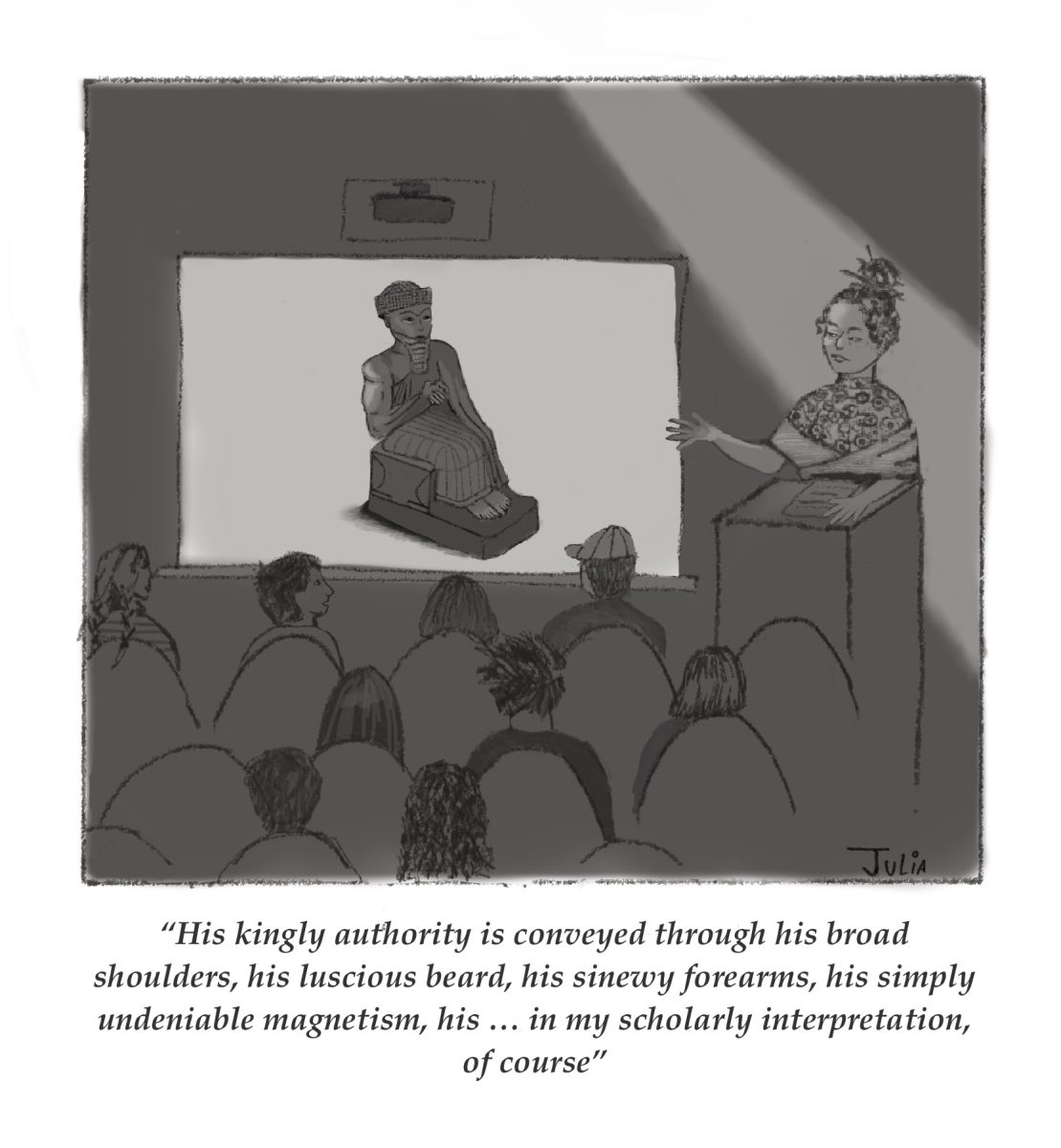Thirty-five students vying for ten spots: This was the unfortunate reality for those who wished to take “Fourier Analysis” with Associate Professor of Mathematics Leo Goldmakher this spring. The course is currently the only tutorial offered by the mathematics department, despite robust interest in the format.
Ten spots a year is simply not enough for every math major to be able to experience the tutorial’s “remarkable academic experience [that] you won’t find at most other colleges,” as the College’s website states.
Departments like computer science, statistics, Spanish, Chinese, and classics offered no tutorials at all in the 2024–25 academic year. As it stands, students who happen to be interested in fields with few or no tutorials are barred from having this experience in their desired field just because of a lack of availability.
Tutorials and seminars are essential to fostering critical thinking skills, deepening comprehension, and promoting a student-faculty bond that other institutions can’t replicate. These intimate learning environments empower students to engage with complex materials and concepts in ways that traditional lectures simply cannot facilitate. This kind of personalized engagement ultimately leads to a richer academic experience for our entire community.
While increasing class sizes for certain courses may seem counterintuitive to preserving the kind of experience a liberal arts model provides, I propose it in order to allow the College to offer more of the seminars and tutorials that form the cornerstones of its distinctive style of teaching.
The College should consolidate popular lecture-based introductory courses, like those of economics and mathematics, into larger classes.
If already-large lectures had twice as many people as they already do, would this change our academic experience? Our relationship with the faculty? It doesn’t seem likely that it would. In fact, it could help facilitate an even better faculty-student dynamic on campus by freeing up faculty time to teach more sections of smaller classes.
Let’s look at the economics department as an example. In the fall semester, it offered six sections of “ECON 110: Principles of Microeconomics” taught by four different professors. Yet over the course of the year, it is offering only three tutorials, with registration priority for Center for Development Economics (CDE) fellows, according to their course descriptions. This disparity, even more prevalent in other departments like computer science, mathematics, and biology, illustrates that the current ratio of tutorials to lectures is out of balance. Holding fewer but larger lectures would free faculty to teach additional tutorial sections, providing more students with the personal, liberal arts experience that drew many of us to the College.
When I think of taking a class in a lecture hall, I picture a huge auditorium at state flagship universities like the Universities of Illinois, Michigan, or Alabama with 300–700 students in a single class. While lectures of that scale can be overwhelming — and avoiding them is one of the key reasons I chose to attend the College — six months in, I have to admit that they have their benefits.
Larger lectures would appear to be at odds with the liberal arts ethos that smaller classes provide a better experience. However, once a class’ size grows beyond a certain point, it stops having an impact on the learning experience. Consider a change from 40 or 60 students to 100 or 200. In either case, full class discussions are not feasible so that students would feel no great changes to the learning environment. On the other hand, larger lectures have distinct benefits: equitable access to foundational course content and a better teaching experience for faculty.
If the economics department consolidated the six sections of ECON 110 into three, each co-taught by the same rotating panel of professors, the material learned and teaching style would be more consistent across students. Furthermore, the perceived need for students to strategize their choice of which professor to take the class with — based on their grading leniency and teaching effectiveness, as gleaned from Factrak — would be gone. Currently, if only some people game the system, those not “in the know” are worse off, being more likely to be given the harder professor. Even if everyone games the system, some people will still get the harder professor anyway — wasting everyone’s time and energy. Having the same learning experience, grading rigor, assignment difficulty, as well as standardizing textbooks and problem sets gets rid of the incentive to game the system. It also makes it easier for Math and Science Resource Center (MSRC) and Economics Resource Center (ERC) tutors to help students across all sections with the same materials, leading to more effective support.
This change could enhance professors’ teaching experience too. By rotating which professor lectures each week, the burden of teaching the class would be distributed more evenly, and each professor would be able to teach the parts of the course that align most closely with their interests.
This model has already worked well for “PSYC 101: Introductory Psychology,” a class of around 160 students where five professors each teach one unit of the course, giving the department increased teaching capacity and the ability to add more upper-level seminars. Even still, disciples of U.S. News rankings might worry that larger lecture sections could negatively impact the College’s standing. The changes I propose, however, would actually improve average class-size metrics. For instance, if three courses-worth of teaching capacity were freed up in the consolidation of the six 40-person ECON 110 sections into three 80-person lectures, the department could have up to 15 more two-person tutorial sections, estimating five sections per tutorial.
This plan to consolidate popular introductory courses into larger lecture sections would make student and faculty experiences at the College more personalized by doubling-down on the tutorial program. I encourage faculty to bring this up within their respective departments and at faculty meetings and consider piloting larger lecture sections in more departments to satisfy the demand for tutorials. We need to let go of the stigma around large lectures and embrace the ways that they can serve our liberal arts model.
Henry Gold ’28 is from Chicago, Ill.




